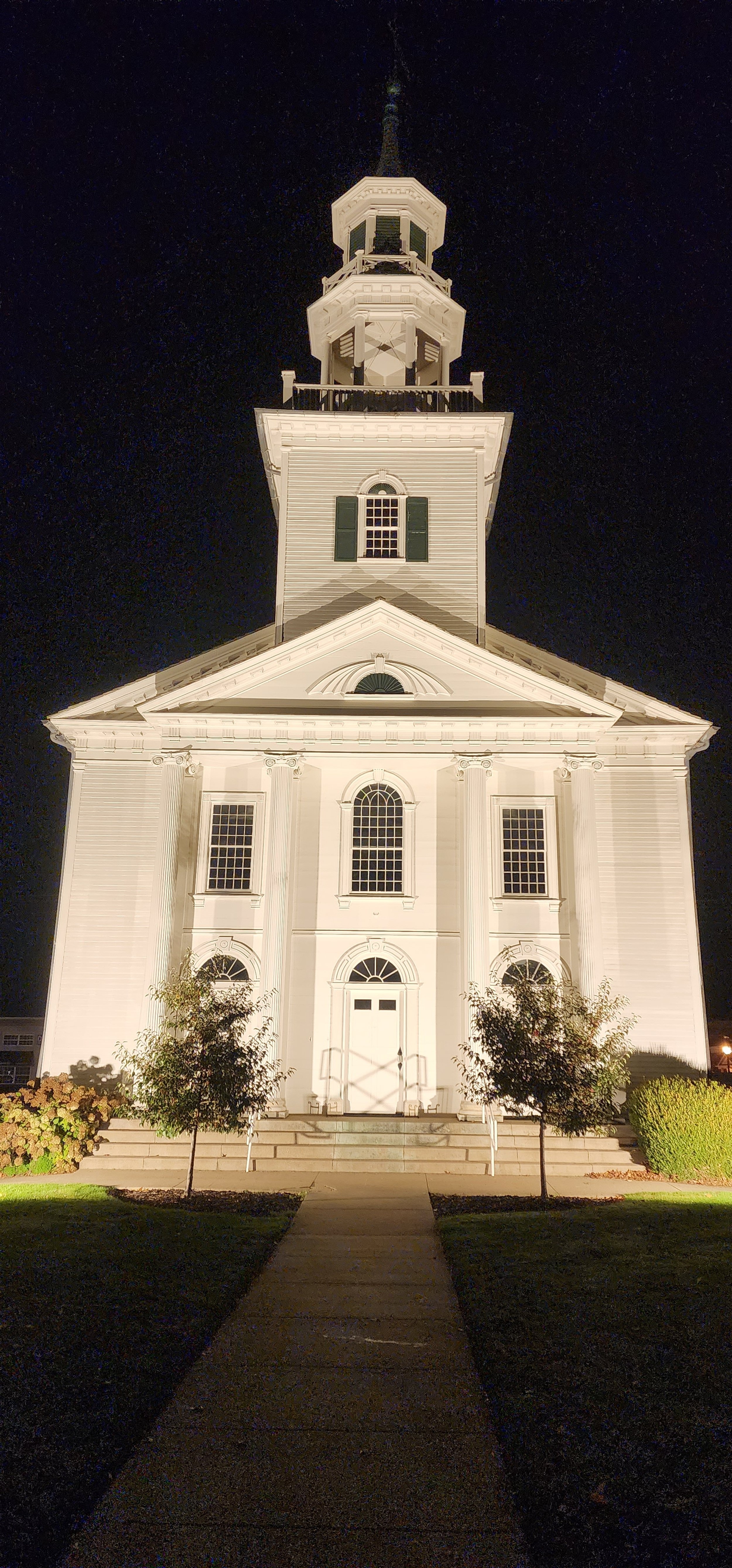Five Words I’ll Never Forget
I met my first best friend in elementary school, a Nigerian boy whom I will call Godwin. He was a generous and loving kid, although we knew each other so long ago that I resort to stories more than memories when remembering him. His family welcomed me into their home and I never felt like I didn’t belong. Before elementary school ended, Godwin returned to Nigeria and we have never reconnected. If memory serves correctly, he returned because his father was unable to emigrate to the United States with the rest of the family.
We both went to school in Tallmadge, Ohio, a small old town that feels transported from colonial New England. Like many cities in Northeast Ohio, Tallmadge played a role in the Underground Railroad. One day, we took a school field trip that featured a stop at the Historic Congregational Church on Tallmadge Circle, where the famous abolitionist Elizur Wright was once a deacon. (The church is pictured to the right.)
Founded in 1825, there is a well-circulated but difficult to verify urban legend: the church basement was one of the very few places where the Underground Railroad actually went under the ground. The story always felt plausible though, thanks to the trapdoors on the sanctuary floor that were supposedly part of an antebellum heating system. The field trip was to teach us about the town, including our town’s role in the Underground Railroad that helped runaway enslaved people flee the South.
One of my earliest memories was formed on that field trip. Standing in the basement of the church, Godwin uttered five words I’ll never forget: “That could have been me.”
We all stood there in silence. He was right. It could have been Godwin.
Godwin’s profound realization left an indelible imprint that developed into a vocational passion to materially change the lives of those on the margin. His comment was almost whispered with innocence; he too was just realizing the truth about North American chattel slavery.
Looking back, these five words set my life on a path toward wanting to help address the legacies and existing systems of structural oppression. Humanizing the problems plaguing our societies can make a big difference. When I encounter oppression and prejudices such as racism, anti-Semitism, and Islamophobia, I picture Godwin standing there in the middle of the church basement. And I still can hear him saying, “That could have been me.”
When one cares for a person who experiences the world differently, like Godwin, prejudice and marginalization gain a human face.
Perhaps this foundational memory involving my first best friend—a memory that attests to the power of words and stories—led me to Interfaith Photovoice and interfaith work more broadly. It’s certainly a memory that has always motivated my understanding of the world. Whatever the case may be, I’m energized by the ways the sharing of our stories, hopes, and pains—represented and brought to life in photos—can facilitate profound encounters similar to the one I had with Godwin.

